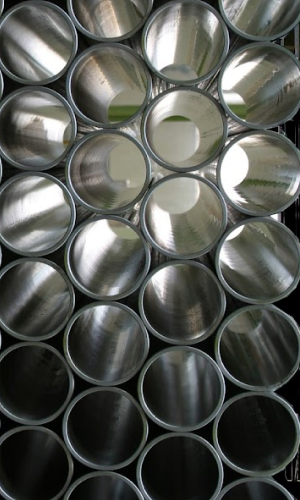Tightness testing of steel pipes can be carried out in various ways, depending on the type of pipe, its intended use and the conditions in which it will be used. In any case, however, the purpose of the test is to detect possible leaks in the pipe.

Calculate the weight of pipes
Hydrostatic method
One of the most commonly used methods of testing the tightness of steel pipes is the hydrostatic method. It involves filling the pipe with pressurized water and checking for leaks. To carry out the test, both ends of the pipe are closed and water is poured into it, and then the pressure inside the pipe is increased, e.g. by using special pumps. The water pressure should be greater than the maximum working pressure that will prevail in the pipe during operation.
The pipe is then subjected to a thorough visual inspection to ensure that there are no cracks, chips, dents or other damage on the surface of the pipe. Particular attention should be paid to places where the pipe joins other elements of the pipeline system, such as valves, elbows, etc. If any leaks are found, they must be repaired.
After these operations, the water is removed from the pipe and then the pipe is dried, e.g. with compressed air. After drying, additional tests can be performed, e.g. a pressure test, which allows you to determine whether the pipe is resistant to changes in pressure inside the pipeline.
Vacuum test method
This method involves applying a vacuum to the pipe (using vacuum pumps) and then monitoring that the pressure inside the pipe remains stable. If the pressure level inside the pipe drops, the pipe is not tight and there are leaks. This method is particularly useful for smaller pipe diameters and low pressure systems.
Ultrasonic test method
This method involves the use of ultrasound to detect leaks in the pipe. To this end, ultrasonic sensors are placed on the pipe to detect sounds coming from the pipe and help pinpoint where the leak is. This method of leak testing is used on very large diameter pipes where a water or vacuum test would be difficult or impossible to perform. In addition, it is used when pipes are installed in hard-to-reach places. And also for high-pressure pipes where the water and vacuum test may not be sufficient.
Trace gas test method
This method involves injecting a tracer gas such as helium into the pipe and detecting its presence with sensors. This method is mainly used for underground pipes where external leaks are difficult to detect.